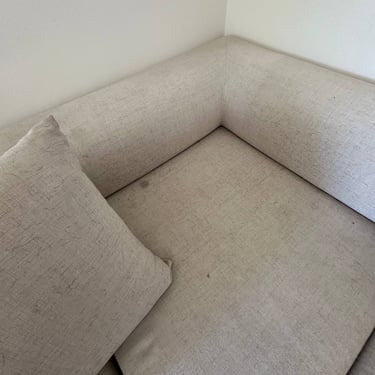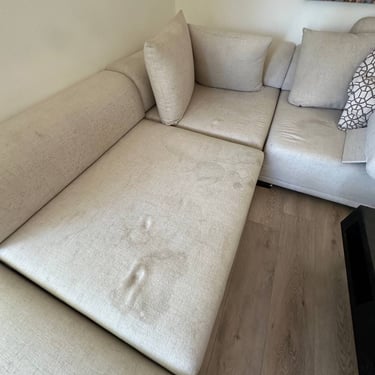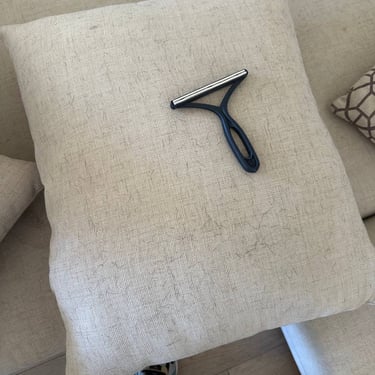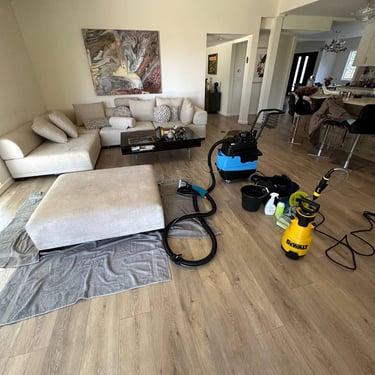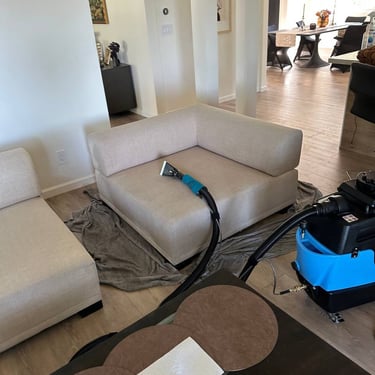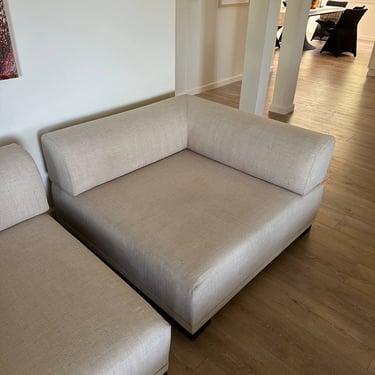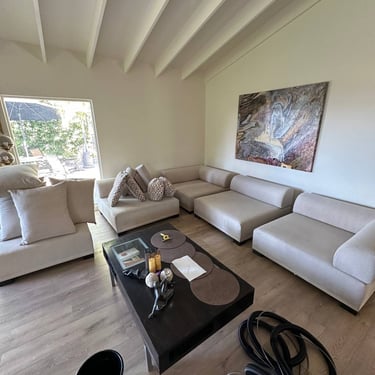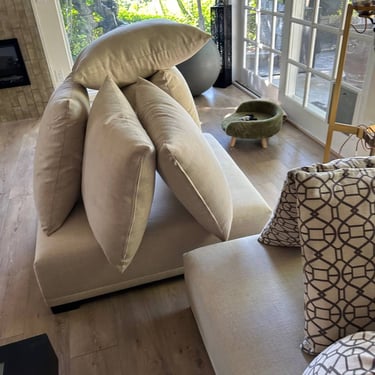Sofa & Cushion Cleaning: a ProHands Handyman Case Study in Los Angeles
A light modular sofa (dense blended upholstery) with multiple cushions. Issues: visible stains and “water rings” after DIY cleaning, lots of pet hair/lint, seat impressions, overall gray cast.
CLEANINGOUR WORKS
8/16/20252 min read
Our goal
Safely remove soiling and odors, restore even color and fabric texture, prevent rings and padding shrinkage, and shorten dry time.
⸻
Step-by-step process
1. Fabric inspection & test. Identified care code (W/WS) and performed a spot test in a hidden area.
2. Dry prep.
• HEPA vacuuming in the nap direction.
• Pet hair/lint and pilling removed with a textile scraper/fabric shaver.
3. Spot treatment.
• Protein/food stains — enzyme pre-spray (neutral pH).
• Grease — targeted solvent booster.
• Water marks — controlled re-wetting to blend edges, then extraction.
4. Primary cleaning. Upholstery extractor: warm water + mild textile shampoo. Short passes with immediate recovery to avoid over-wetting foam.
5. Rinse & neutralize. Mild acidic rinse to normalize pH and reduce stickiness/resoiling.
6. Drying. Turbo/through ventilation. Cushions positioned on edge with seams open for moisture release.
7. Finish. Groomed nap in one direction, fluffed cushions, aligned modules.
Result: even, bright tone with no stains or water rings; refreshed fabric hand; cushions hold shape.
⸻
Why DIY cleaning leaves rings
• Hard water deposits minerals → “halo” outlines.
• Alkaline household products without rinsing leave sticky residue → faster resoiling.
• Over-wetting foam → long dry times and map-like surface rings.
How to avoid: always spot-test, work in small sections, use neutral pH products, rinse, and speed-dry.
⸻
Quick guide to upholstery care codes
• W — water-based cleaning allowed; hot-water extraction acceptable.
• WS — water-based or solvent products (use care).
• S — solvent only (no water; pro chemistry needed).
• X — vacuum/dry brush only; call a pro.
⸻
Between-visit maintenance
• Weekly: vacuum with a soft brush; clean seams and under cushions.
• Pet hair/pilling: textile scraper or lint roller.
• Fresh spills: blot (do not rub) with a white towel, a touch of room-temp water, then cool air to dry.
• Ventilation: speed dry with a fan; warmth without high humidity.
• Pro frequency: every 9–12 months; with kids/pets — every 6–9 months.
⸻
FAQ
How long does it take to dry?
Typically 3–6 hours with normal ventilation. Dense cushions can take 8–10 hours.
Do you remove pet odors?
Yes. Enzyme chemistry plus rinsing. Severe cases may require a two-step treatment.
Is it safe for kids and pets?
We use pro-grade, neutral-pH products. After rinsing and drying the surface is safe.
Can old water rings be removed completely?
In most cases — yes. Key is controlled re-wetting, extraction, pH neutralization, and fast drying.
How much does it cost?
Depends on section size, fabric type, and soil level. Send 2–3 photos for a same-day estimate.
Need your sofa cleaned?
Send a few photos and we’ll advise whether your stains can be removed to “like new.”
ProHands Handyman
Phone: 818-401-7766 (call/text)
Email: info@prohandshandyman.com
